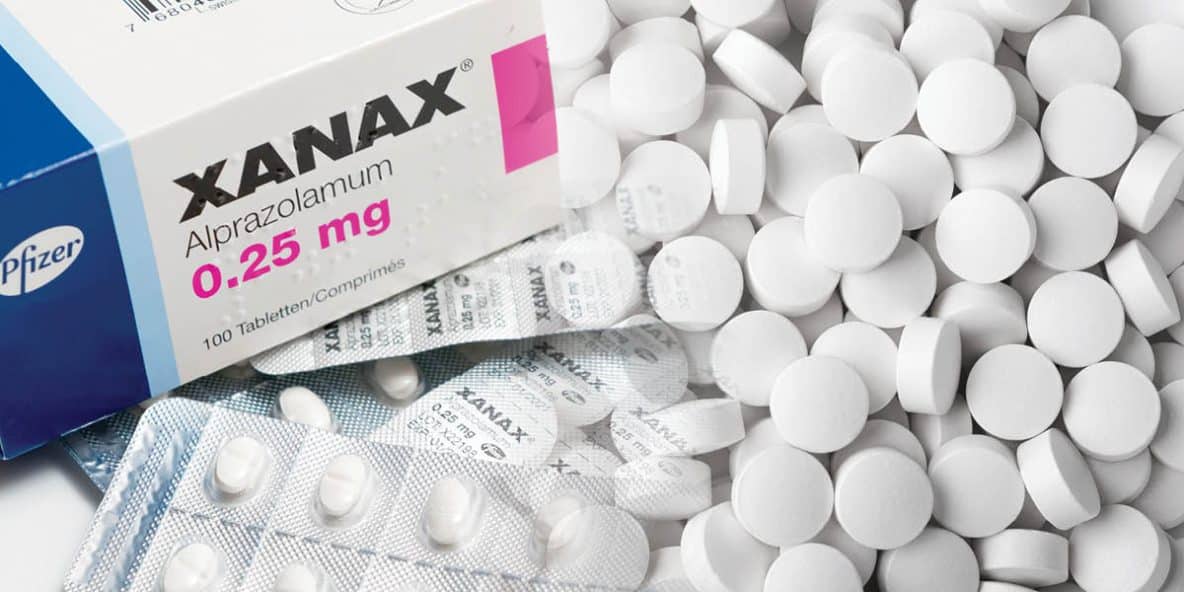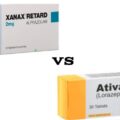What is Xanax and how is it used?
Xanax is a type of alprazolam, a prescription medicine used to treat the symptoms of anxiety, panic disorder, and anxiety associated with depression. Xanax may be used alone or with other medications. Xanax belongs to a class of drugs called Anti-anxiety Agents, Anxiolytics, Benzodiazepines.
Benzodiazepines like Xanax reduce anxiety by attaching to a receptor in your brain called the GABA-A (gamma-aminobutyric acid-A) receptor. When Xanax binds to this receptor, it has a calming effect on the brain. Xanax is often prescribed for anxiety disorders because it can help relieve anxiety symptoms quickly.
Xanax dosage for generalized anxiety disorder (GAD)
Mental health professionals diagnose generalized anxiety disorder when a person experiences excessive worry about a range of issues on an almost daily basis for six months or more. More specific anxieties, called phobias, and short-term anxiety in adults are usually not treated with drugs like Xanax.
- Standard dosage for generalized anxiety disorder: 0.25–0.5 mg taken orally three times per day
- Maximum dosage for generalized anxiety disorder: 4 mg per day
Xanax dosage for panic disorder
People with panic disorder with or without agoraphobia (fear of places that may cause panic or embarrassment) experience frequent and uncontrollable “panic attacks”—periods of intense and overwhelming fear—that come on suddenly and significantly impair daily functioning. Most healthcare professionals will start treatment with a low Xanax dose and steadily increase the dose every three to four days until panic attacks are under control. While no maximum dose for Xanax has been defined, some patients require more than 4 mg a day to manage panic attacks. Even higher doses (up to 10 mg per day) have been used in some patients.
- Standard dosage for panic: 0.5–3 mg taken orally three times per day
- Maximum dosage for panic disorder: Not specified
Xanax dosage restrictions
Some people may require a lower dose or less frequent dosing. Doses should be started at the lowest possible dose and increased slowly in those with debilitating diseases or older patients.
Alprazolam is metabolized by the liver, so people with hepatic impairment will be started at the lowest possible dose (0.25 mg). The dose should only be slowly increased while carefully monitoring side effects. The dose may be decreased below 0.25 mg if adverse reactions are a problem.
Because the kidneys are not critical to the elimination of Xanax, people with renal impairment or kidney failure will not require a dose adjustment.
Xanax dosage for pets
Alprazolam and other benzodiazepines are often used in dogs and cats on an as-needed basis to treat a variety of anxiety symptoms, anxiety attacks, and phobias. Alprazolam is also given to cats with soiling or urine marking behaviors. Some veterinarians may use alprazolam or other benzodiazepines to calm aggressive dogs, though this treatment is controversial.
Dogs and cats are only rarely put on long-term alprazolam therapy. In most cases, the drug will be given before an anxiety-triggering event, like a thunderstorm, or when the animal is experiencing panic or anxiety. The veterinarian will determine each dose by the animal’s weight. For dogs, the dose can range from 0.01 mg to 0.4 mg per kilogram (kg) of body weight depending on the anxiety being treated. Cats will be dosed between 0.05 and 0.25 mg/kg.
Always talk to a veterinary professional before using any medications to calm an animal. Xanax, on the other hand, is formulated for humans and should never be given to an animal. If necessary, veterinarians will prescribe alprazolam in a formulation safe for animals that can be administered at a suitable dose strength.
How to take Xanax
Xanax is taken as a tablet several times a day with or without food.
- Take the medicine as directed. The dose may need to be regularly changed until an effective dose is reached.
- A Xanax prescription will include a medication guide. Read and follow the patient instructions included with the medication guide.
- Store Xanax tablets at room temperature (68–77°F) in a child-safety closed container out of the reach of children.
- Swallow tablets whole with a glass of water. Do not crush, chew, or break the tablet.
Xanax vs. Xanax XR: What’s the difference in doses?
Xanax is FDA-approved to treat generalized anxiety disorder and panic disorder. The extended-release format, Xanax XR, however, is only FDA-approved to treat panic disorder. Xanax is taken three times a day in doses ranging from 0.25 mg to 3 mg depending on the condition being treated. Xanax XR, however, is intended to be taken once per day—usually in the morning—in doses ranging from 0.5 to 6 mg.
How long does it take Xanax to work?
Xanax starts working within an hour of taking a dose. It reaches its peak concentration in the blood in about two hours. Xanax can be taken with or without food. Food will not affect the body’s ability to absorb and use the drug.
How long does Xanax stay in your system?
Xanax has a half-life of 11 hours in healthy patients. This means that it takes the body 11 hours to eliminate half the drug from the body, at which point the effects of the drug will noticeably fade. The pharmacology of alprazolam will determine how long it lasts in the body. The drug is metabolized by the liver. Cells in the liver change alprazolam into other substances. This means that the half-life can stretch out longer in some people: up to 16 hours for geriatric patients, 65 hours in people with liver dysfunction, and 40 hours in people with excessive weight. Some drugs, such as the antifungals ketoconazole and itraconazole, block the liver’s ability to break down alprazolam, causing it to stay in the body longer at higher concentrations. Dosage reduction may be required in all of these cases.
Although Xanax’s effects wear off pretty quickly, it takes about four days for the drug to fall to undetectable levels. This is important for anyone taking a drug test. The presence of alprazolam on a drug test could mean failing the test. Depending on the amount of Xanax taken, blood tests can detect alprazolam for up to one to six days and urine tests for up to seven days after taking the last dose. In some states, drivers can be convicted of a DUI if any alprazolam is detected in a driver’s blood test and there is convincing evidence of impairment.
What happens if I miss a dose of Xanax?
Take the missed dose when remembered. However, if it is nearly time to take the next scheduled dose, skip the missed dose and take the next dose as scheduled. Do not under any circumstances take extra medicine or a double dose to make up for a missed dose.
How long can you take Xanax?
Xanax is only intended to be taken for the short term. Alprazolam is a Schedule IV controlled substance, meaning it has the potential for drug abuse, dependence, and withdrawal. For this reason, Xanax is used to treat generalized anxiety disorder for four months or less. It is undetermined how long people with panic disorder need to take Xanax, but the duration usually does not last for longer than ten weeks.
How do I stop taking Xanax?
Do not stop taking Xanax without seeking medical advice first.
Xanax and other benzodiazepines can cause physical dependence. Abrupt discontinuation of the drug can produce withdrawal marked by symptoms. These include rebound anxiety, insomnia, drug cravings, nightmares, irritability, rage, homicidal thoughts, suicidal thoughts, delirium, psychosis, seizures, high blood pressure, and sweating. Some withdrawal symptoms can persist for as long as 12 months, including depression, cognitive impairment, memory impairment, unusual skin sensations, and weakness. For people taking excessive amounts of benzodiazepines, withdrawal can even be life-threatening.
Xanax must be discontinued through a tapering dose prescribed by a doctor. Unfortunately, withdrawal is still possible even with a tapered dose.
There are some reasons to discontinue Xanax suddenly, including hypersensitivity, pregnancy, breathing problems, drug interactions, or intolerable adverse effects such as seizures or mania. Some people may need to stop when common side effects of alprazolam such as drowsiness, impairment, dry mouth, or constipation interfere with functioning or reduce the quality of life.






